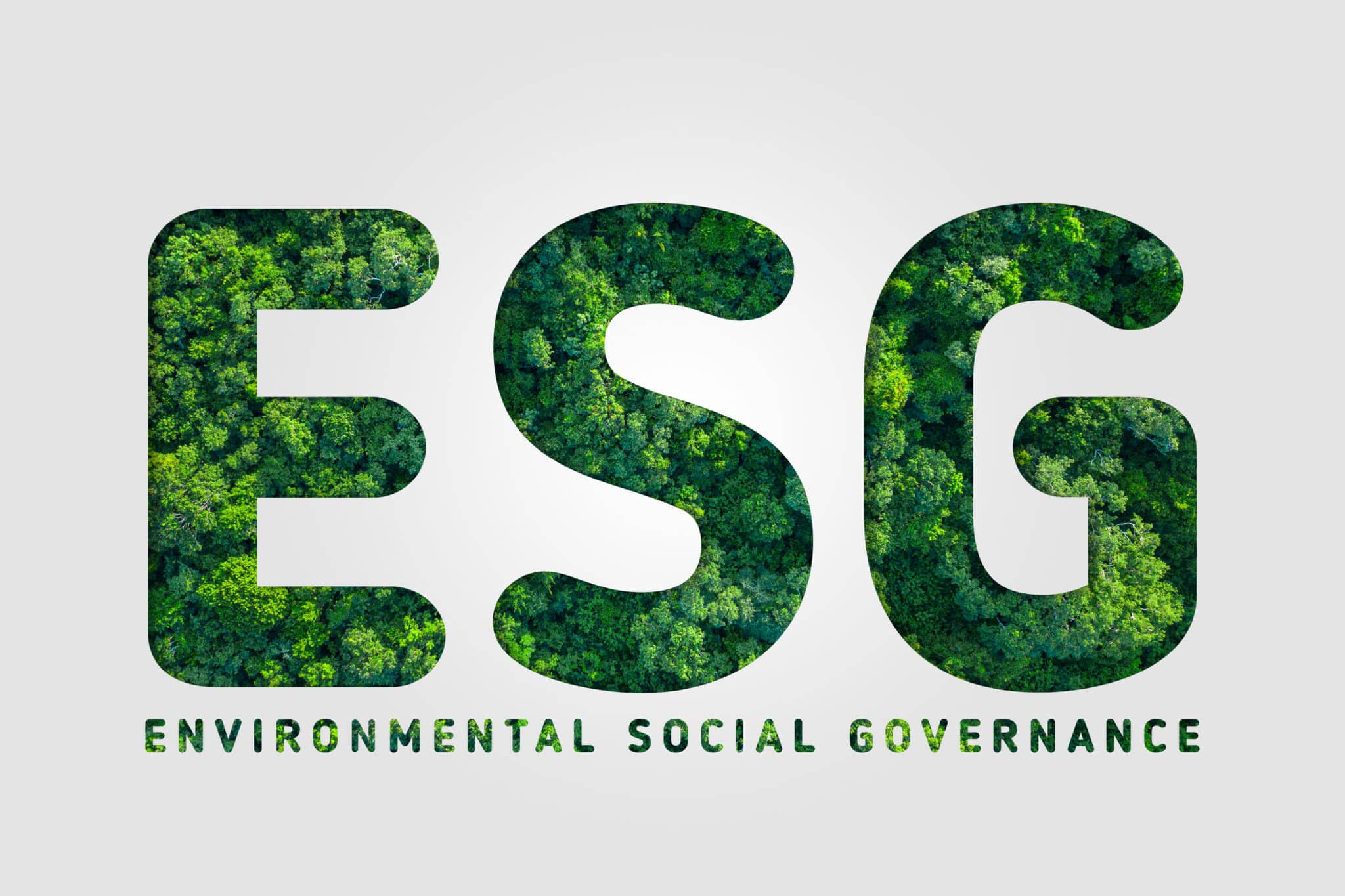
What is ESG? A Trail Guide to Environmental, Social, and Governance in Business
Picture standing on a mountain ridge at dawn, watching the first light illuminate pristine wilderness stretching to the horizon. That view represents what business could become when guided by true environmental stewardship. Yet down in the valleys below, countless companies operate without considering their impact on the very ecosystems that sustain us all.
ESG stands for Environmental, Social, and Governance. It’s a comprehensive framework that measures how organizations manage their impact on the planet, their people, and their principles. Think of ESG as the Leave No Trace principles applied to business – a set of guidelines ensuring companies operate responsibly while preserving resources for future generations.
The ESG meaning extends far beyond corporate buzzwords. Like reading weather patterns before a backcountry expedition, ESG helps investors and stakeholders assess the long-term sustainability and ethical foundation of business operations. What does ESG stand for exactly? It represents a fundamental shift toward recognizing that profit alone cannot measure success.
Companies embracing ESG principles understand that healthy ecosystems, thriving communities, and ethical leadership create the foundation for lasting prosperity. Just as a healthy forest depends on diverse species working together, sustainable business requires balancing environmental protection, social responsibility, and sound governance.
The Environmental Pillar: Protecting Our Shared Wilderness
The environmental component of ESG focuses on how companies interact with the natural world. Environmental factors encompass everything from carbon emissions and energy consumption to waste management and biodiversity protection. Like seasoned wilderness guides who understand that every action impacts the ecosystem, responsible companies recognize their environmental footprint.
Climate change represents the most pressing environmental challenge. Companies must measure and reduce greenhouse gas emissions across their operations. This includes direct emissions from facilities and vehicles (Scope 1), indirect emissions from purchased energy (Scope 2), and value chain emissions from suppliers and customers (Scope 3). Forward-thinking organizations are transitioning to renewable energy sources and implementing circular economy principles.
Water stewardship has become increasingly critical as freshwater resources face mounting pressure. Companies are adopting conservation measures, improving water quality in their operations, and protecting watershed areas. Waste reduction initiatives mirror the outdoor ethic of packing out what you pack in – minimizing waste generation and maximizing recycling and reuse.
Biodiversity conservation efforts extend beyond company boundaries. Organizations are protecting natural habitats, supporting conservation initiatives, and ensuring supply chains don’t contribute to deforestation or habitat destruction. Like maintaining wildlife corridors that allow animal migration, companies are creating sustainable pathways for business growth that don’t compromise ecological integrity.
Resource efficiency drives innovation in product design and manufacturing processes. Companies are developing products with longer lifespans, using recycled materials, and designing for end-of-life recycling. This approach reflects the outdoor principle of choosing durable, multi-purpose gear that serves reliably across many adventures.
The Social Foundation: Building Strong Communities
The social dimension of ESG examines how companies treat people and contribute to community well-being. Social factors include employee relations, community impact, customer satisfaction, and supply chain labor practices. Just as outdoor enthusiasts look out for fellow adventurers, responsible companies prioritize the welfare of all stakeholders.
Workplace safety and employee well-being form the cornerstone of social responsibility. Companies implement comprehensive safety programs, promote work-life balance, and invest in employee development. Like ensuring every team member has proper safety equipment before heading into challenging terrain, organizations must protect their workforce from physical and psychological harm.
Diversity, equity, and inclusion initiatives create workplaces where everyone can thrive. Companies are addressing pay gaps, promoting underrepresented groups into leadership positions, and fostering inclusive cultures. This reflects the outdoor community’s growing recognition that diversity of perspectives strengthens teams and enhances decision-making.
Community engagement extends corporate responsibility beyond company walls. Organizations support local economic development, education initiatives, and environmental conservation projects. Like the principle of giving back to trail maintenance and conservation efforts, companies invest in the communities where they operate.
Supply chain responsibility ensures ethical practices throughout the value network. Companies audit suppliers for labor standards, environmental compliance, and human rights practices. This comprehensive approach recognizes that corporate responsibility extends to every link in the supply chain, similar to how Leave No Trace principles apply to every aspect of outdoor recreation.
Customer safety and product quality reflect a commitment to user well-being. Companies invest in rigorous testing, transparent labeling, and responsive customer service. Like outdoor gear manufacturers who understand that equipment failure can have serious consequences, responsible companies prioritize customer safety above profit margins.
Governance: The Compass for Ethical Leadership
Corporate governance provides the framework for ethical decision-making and accountability. Governance factors include board composition, executive compensation, business ethics, and transparency. Like a reliable compass that guides navigation through challenging terrain, strong governance ensures companies stay on the right path.
Board diversity and independence strengthen oversight and decision-making. Companies are appointing directors with diverse backgrounds, relevant expertise, and genuine independence from management. Effective boards include members who understand sustainability challenges and can guide long-term strategy. This diversity of perspectives parallels the value of having team members with different outdoor skills and experiences.
Executive compensation alignment ensures leadership incentives support sustainable value creation. Companies are linking executive pay to ESG performance metrics, long-term value creation, and stakeholder outcomes. This approach moves beyond short-term profit maximization toward balanced value creation for all stakeholders.
Business ethics and integrity form the foundation of stakeholder trust. Companies implement comprehensive ethics programs, anti-corruption measures, and whistleblower protections. Like the outdoor community’s emphasis on honesty about conditions and capabilities, business success depends on transparency and integrity.
Risk management processes help companies identify and address potential challenges before they become crises. Effective governance includes robust risk assessment, scenario planning, and crisis response capabilities. This proactive approach mirrors how experienced outdoor enthusiasts plan for contingencies and changing conditions.
Transparency and reporting enable stakeholders to evaluate company performance and hold leadership accountable. Companies publish detailed ESG reports, participate in third-party assessments, and engage regularly with stakeholders. This commitment to transparency reflects the outdoor ethic of sharing information about conditions and best practices.
ESG Investing: Following the Sustainable Trail
ESG investing integrates environmental, social, and governance factors into investment decision-making. What is ESG investing? It’s the practice of evaluating companies based on their sustainability performance alongside traditional financial metrics. ESG funds screen investments based on companies’ environmental impact, social responsibility, and governance quality.
Investors increasingly recognize that ESG factors can significantly impact long-term financial performance. Companies with strong ESG practices often demonstrate better risk management, operational efficiency, and stakeholder relationships. Research suggests that organizations prioritizing sustainability tend to outperform peers over extended periods.
Different approaches to ESG investing serve various investor objectives. Integration strategies incorporate ESG analysis into traditional financial evaluation. Screening approaches exclude companies with poor ESG performance or controversial business practices. Impact investing explicitly seeks measurable positive environmental or social outcomes alongside financial returns.
ESG funds have experienced tremendous growth as investor interest in sustainable investing has surged. According to research, two-thirds of investors now consider ESG factors when making investment decisions. This trend reflects growing awareness that environmental and social challenges pose material financial risks.
The performance of ESG investing continues to attract institutional and individual investors. Studies indicate that companies with robust ESG practices often demonstrate lower volatility, better crisis resilience, and stronger long-term growth prospects. This aligns with the outdoor principle that sustainable practices ensure long-term access to natural resources.
ESG Reporting: Documenting the Journey
ESG reporting involves disclosing environmental, social, and governance performance data to stakeholders. What is ESG reporting? It’s the systematic documentation of how companies manage sustainability challenges and opportunities. ESG reports provide investors, customers, employees, and communities with transparent information about corporate performance.
Companies publish annual ESG reports detailing their environmental impact, social initiatives, and governance practices. These reports include quantitative metrics such as carbon emissions, water usage, employee diversity statistics, and safety performance. Qualitative information covers strategy, policies, and progress toward sustainability goals.
Multiple reporting frameworks guide ESG disclosure practices. The Global Reporting Initiative provides comprehensive sustainability reporting standards. The Task Force on Climate-related Financial Disclosures focuses specifically on climate risks. The Sustainability Accounting Standards Board offers industry-specific guidance for material ESG issues.
Regulatory requirements for ESG reporting continue expanding globally. The European Union’s Corporate Sustainability Reporting Directive mandates detailed ESG disclosure for many companies. California has implemented climate disclosure requirements for large corporations. These regulations reflect growing governmental recognition of ESG information’s importance.
Third-party verification enhances the credibility of ESG reporting. Independent auditors review companies’ ESG data and processes to ensure accuracy and completeness. This verification provides stakeholders with confidence in reported information, similar to how trail guides undergo certification to ensure competency and safety.
Regulatory Oversight: The Rangers of Corporate Responsibility
Several regulatory bodies oversee ESG disclosure and compliance. In the United States, the Securities and Exchange Commission focuses on ESG disclosure requirements for public companies, climate risk reporting, and investment adviser ESG claims. The SEC has developed comprehensive climate disclosure rules requiring companies to report material climate risks and greenhouse gas emissions.
The Commodity Futures Trading Commission addresses climate-related financial risks in derivatives markets. Federal banking regulators including the Federal Reserve, Office of the Comptroller of the Currency, and Federal Deposit Insurance Corporation provide guidance on climate risk management for financial institutions.
These regulatory agencies work to ensure companies provide accurate, consistent ESG information to stakeholders. Like park rangers who enforce Leave No Trace principles to protect natural resources, financial regulators establish standards to protect investors and promote sustainable business practices.
International coordination among regulators is increasing as ESG issues transcend national boundaries. Organizations such as the International Organization of Securities Commissions facilitate global cooperation on sustainable finance regulation. This collaborative approach recognizes that environmental and social challenges require coordinated responses.
Enforcement mechanisms include penalties for inadequate disclosure, investigation of misleading ESG claims, and requirements for corrective action. Regulators are developing expertise in ESG issues and establishing specialized teams to oversee compliance. This regulatory evolution reflects the growing materiality of ESG factors for business performance.
What Does ESG Mean for Business Success?
ESG performance increasingly influences business outcomes across multiple dimensions. Companies with strong ESG practices often experience lower operational costs through improved efficiency and waste reduction. Energy conservation, water stewardship, and waste minimization directly impact bottom-line performance while supporting environmental goals.
Risk management benefits include reduced exposure to environmental liabilities, social controversies, and governance failures. Companies proactively addressing ESG issues are better positioned to navigate regulatory changes, stakeholder expectations, and market disruptions. This resilience reflects the outdoor principle of preparing for changing conditions and potential challenges.
Talent attraction and retention improve when companies demonstrate genuine commitment to sustainability and social responsibility. Employees, particularly younger generations, increasingly seek employers whose values align with their own. Organizations with strong ESG performance often report higher employee engagement, lower turnover, and easier recruitment.
Customer loyalty and brand reputation benefit from authentic ESG leadership. Consumers increasingly consider corporate values when making purchasing decisions. Companies demonstrating environmental stewardship and social responsibility often command premium pricing and stronger customer relationships.
Access to capital has become increasingly tied to ESG performance. Investors are allocating more funds to companies with strong sustainability practices. Organizations with poor ESG performance may face higher borrowing costs or difficulty accessing certain capital markets.
The Trail Ahead: ESG’s Future in Business
ESG will continue evolving as stakeholder expectations and regulatory requirements advance. Climate change urgency is driving more comprehensive environmental reporting and action. Social justice movements are elevating focus on equity, diversity, and human rights. Corporate governance scandals reinforce the importance of ethical leadership and transparency.
Technology is transforming ESG measurement and reporting capabilities. Artificial intelligence helps analyze vast amounts of sustainability data. Satellite monitoring enables real-time tracking of environmental impacts. Blockchain technology could improve supply chain transparency and verification.
Standardization efforts aim to improve ESG data quality and comparability. International organizations are working to align reporting frameworks and establish common metrics. This standardization will help investors and other stakeholders make more informed decisions based on reliable, consistent information.
Integration with business strategy will deepen as companies recognize ESG factors’ material impact on performance. Organizations are moving beyond viewing ESG as a separate initiative toward incorporating sustainability considerations into core business decisions. This integration reflects growing understanding that environmental and social factors drive long-term value creation.
Finding Your Path: ESG as a Business Compass
Understanding ESG fundamentals provides essential navigation tools for modern business challenges. Like learning to read topographic maps and weather patterns before venturing into wilderness areas, business leaders must develop literacy in environmental, social, and governance factors that influence long-term success.
Companies beginning their ESG journey should start with honest assessment of current performance. This baseline evaluation identifies strengths to build upon and areas requiring improvement. Like checking gear and supplies before a major expedition, thorough preparation prevents problems and ensures readiness for challenges ahead.
Setting meaningful goals and tracking progress enables continuous improvement in ESG performance. Organizations should establish specific, measurable objectives aligned with business strategy and stakeholder expectations. Regular monitoring and reporting help maintain accountability and demonstrate commitment to sustainability.
ESG represents more than compliance with evolving regulations or investor demands. It embodies a fundamental recognition that business success depends on healthy ecosystems, thriving communities, and ethical leadership. Companies embracing this holistic approach position themselves for sustainable prosperity while contributing to the well-being of our shared planet.
The trail toward sustainable business practices requires commitment, adaptability, and continuous learning. Like any worthwhile adventure, the journey challenges conventional thinking and demands new skills. Yet the rewards – for business performance, stakeholder relationships, and environmental stewardship – make this expedition essential for any organization planning to thrive in our interconnected world.






